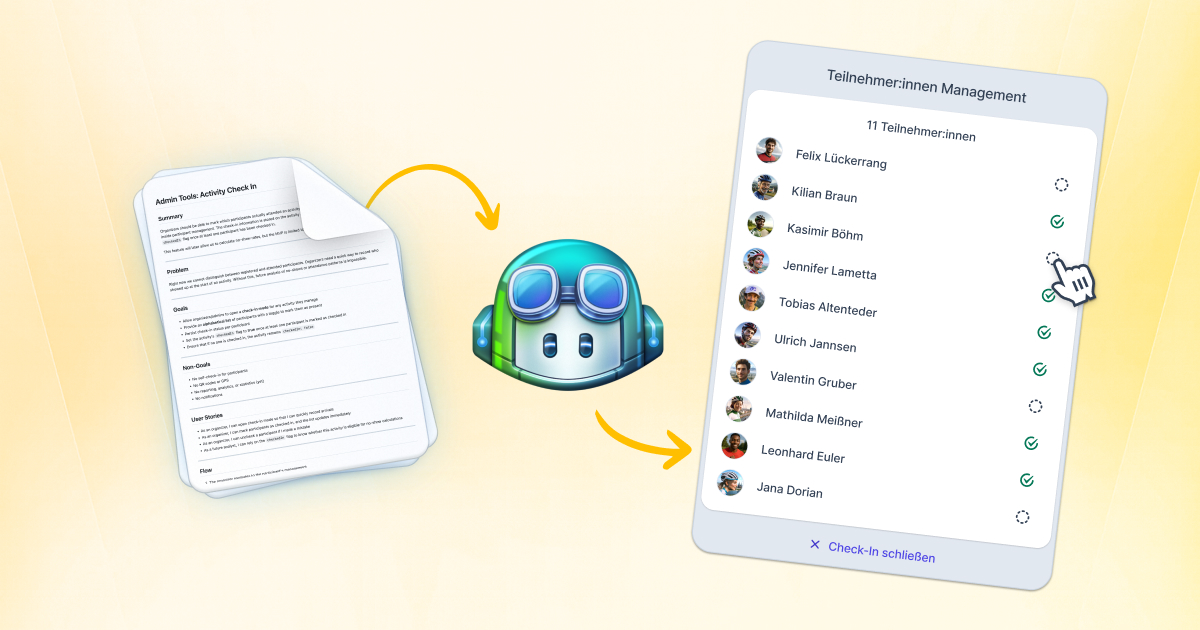A few days ago I experienced one of those “this changes everything” moments with GitHub Copilot.
One of the most requested features on our platform Joinride.cc is the ability for ride organizers to check in participants at the start of an activity. Admins want to see who actually shows up and use that data later to calculate no-show rates. The idea is simple, but valuable: riders who consistently show up could eventually be rewarded with perks or goodies, while admins gain a better sense of reliability in their communities.
It’s a neat feature, but not exactly critical. That’s why it sat lower on our roadmap. Until GitHub Copilot built it for us almost on its own.
Writing the ticket like a developer
Instead of jumping straight into code, I spent about 15 minutes writing a proper GitHub Issue. I approached it like I would if I were briefing a developer.
The ticket included:
- A short summary of the feature
- Clear problem statements
- A list of goals
- A set of non-goals (what we explicitly would not include in this iteration)
- User stories to anchor the feature in real scenarios
- A description of the desired flow within the current participant management journey
- Edge cases to consider
- Possible future extensions, so we would not box ourselves in
- And finally, concrete acceptance criteria
Before saving it, I let ChatGPT polish the text to make sure it was crisp and unambiguous.
Copilot coded, while I was shopping
Then I closed my laptop, grabbed my shopping bag, and headed to the supermarket. On the way in, I opened the GitHub mobile app and assigned the issue to GitHub Copilot.
By the time I left the store 15 minutes later, groceries in hand, the feature was already built. Copilot had created a pull request, complete with working code and documentation.
When I sat down at a café shortly after and reviewed the PR, I was stunned. The implementation was almost flawless. No bugs, no messy shortcuts, just a working feature. The only thing missing? A couple of icons, not yet included in our set, which Copilot had even noted in the documentation. I added those myself in minutes.
From backlog to production in minutes
And just like that, one of our most frequently requested features was live. And here's the thing: It was not one of the most important features for the platform. It was something that had been deprioritized for months because it only benefits larger clubs and teams. Though, exactly these teams and clubs often asked for it.
That is the real power of AI-assisted development. GitHub Copilot does not just speed up what is already planned, it changes what gets built at all. Small “nice to have” features that would normally be cut in favor of bigger priorities can now make their way into production.
Why this matters
For me, this was not just about a check-in feature. It was about seeing how fast the gap between idea and execution is shrinking. As product designers, founders, or developers, we can now:
- Write structured, developer-ready tickets in minutes
- Let AI translate those specs into working code
- Free up time to focus on design, strategy, and user experience
- Deliver value to users faster, even with a tiny team
GitHub Copilot did not just ship a feature while I was buying groceries. It shifted how I think about product development, prioritization, and what is possible when AI becomes part of the team.
Looking ahead
If I alone can go from ticket to working feature while shopping for groceries, imagine what established development teams and product organizations can now accomplish. With the right approach, this new super power does not just accelerate delivery, it redefines the scale and ambition of what teams can build together.


